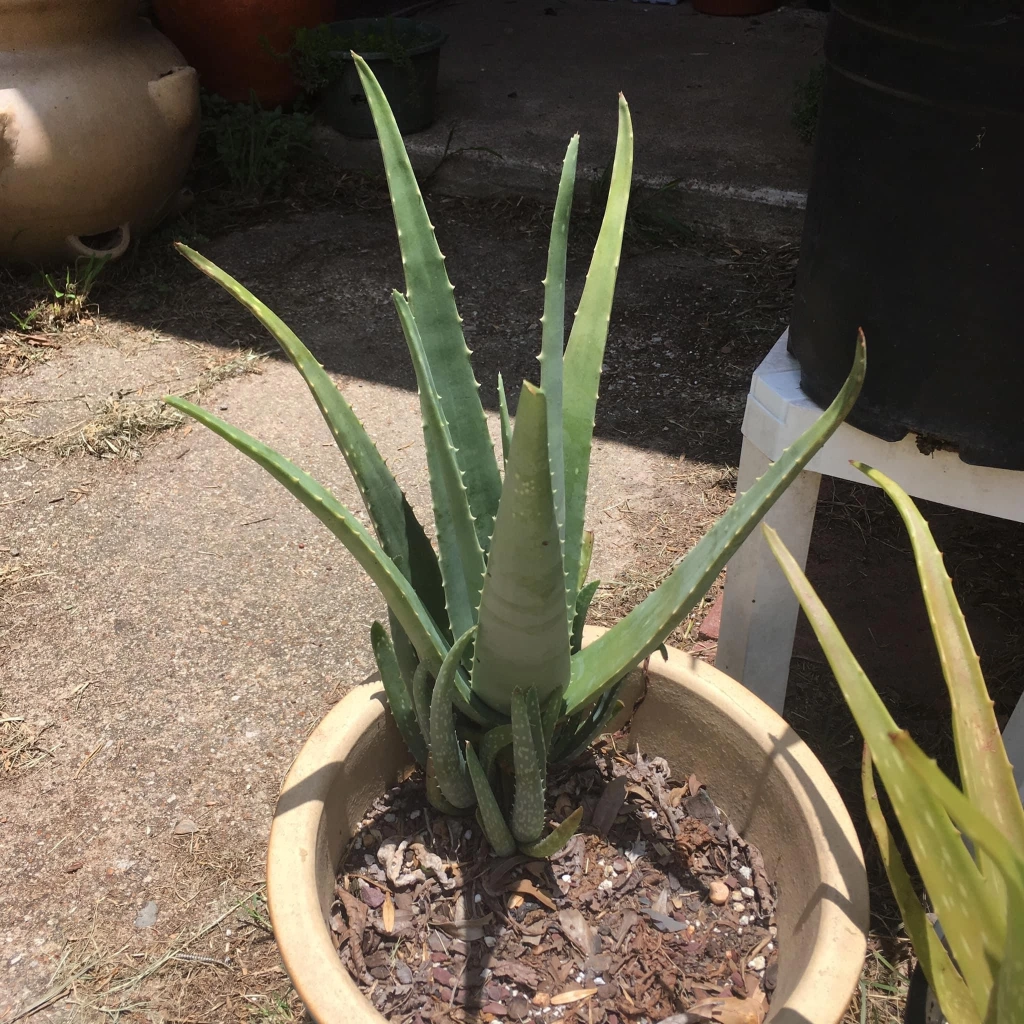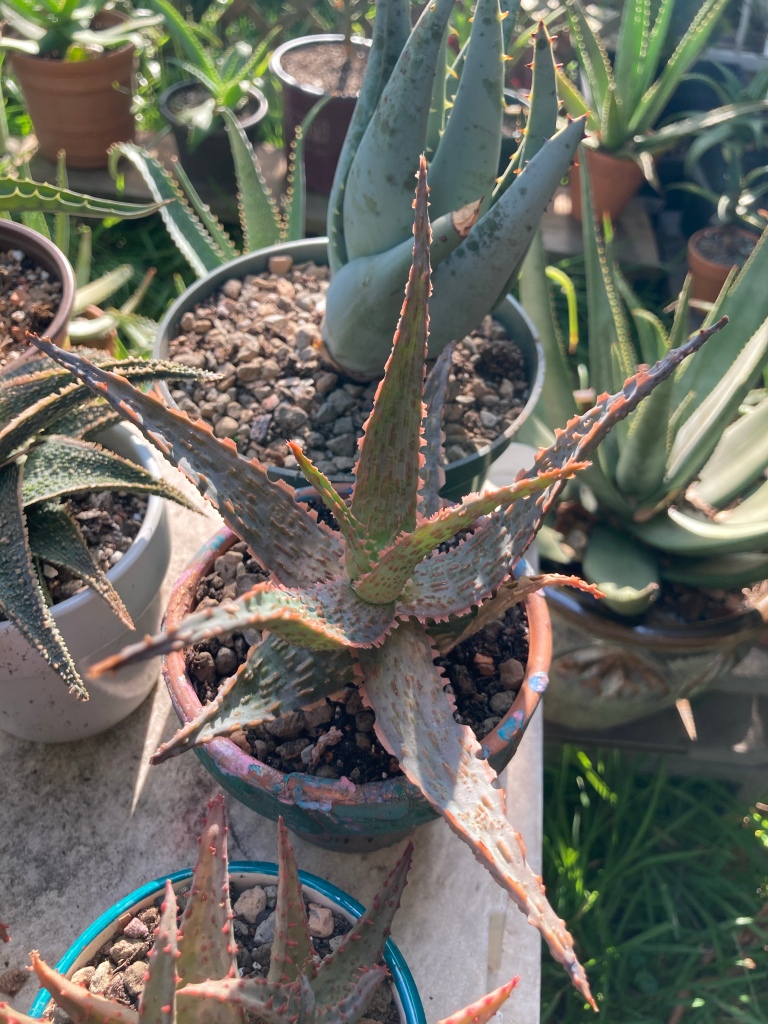
Aloes can change colors for a variety of reasons, but the most common response I see to “why is my Aloe turning this color?” is – “It’s sunburn,” and cue people panicking about too much sun, and “Oh no, my Aloe is dying!”

Okay, take a deep breath and calm down. Brown isn’t really an attractive color, so I get why it causes people to panic or avoid putting their plant in the sun. I can also see why people might not like the grey-ish color they can turn in strong sun, but it really isn’t an unhealthy color. If your Aloe vera is turning brown (like a tan) it’s a stress color, not sunburn, and you haven’t killed your plant. Translucent brown is rot, and usually accompanied by leaking or mushy leaves that come apart when touched. Stress colors are not the plant saying “oh, I don’t like this” it’s the plant saying “oh, this is different.”

Stress is not always sun related, either, but the sun always gets the blame. It’s just adjusting to something in the environment that has changed. If it’s sun related, it’s either reacting to being in more light than it’s used to and will turn green again when it adjusts, or it needs more water. Being in stronger sun (and heat) will make your vera plant thirstier. Water it! As long as it’s in a well draining soil mix, Aloe vera can actually handle a decent amount of water in the summer..especially the hotter and drier your environment is. Aloe vera is not summer dormant. Some Aloes are summer dormant (depending on the variety, where it’s from, and where you are growing it), Aloe vera is not one of them. As for sunburn, that bleaches the color and causes permanent damage to the leaves. Stress colors do not cause permanent damage. Curled leaves and dry leaf tips are signs of thirst, and that can cause stress colors too.





My Aloes also develop stress colors more often in the winter when the temps drop. They all live outside year round because it doesn’t really ever freeze here. Cold is not an absolute death sentence to your plant, either. There are Aloes that can handle even down to the high teens (Fahrenheit), if established and healthy….vera is more sensitive to cold than other species. Occasionally I have to bundle them up, but not often.
Other causes for stress colors include being separated or repotted or being rootbound (because that makes them thirstier.) One thing you want to watch for, if nothing in the plants environment has changed, it’s getting water and still looks thirsty, and it’s in poor draining soil – it may have dropped its roots. Poor drainage smothers the roots, and if a plant has no roots to take up water it’s going to look pretty thirsty. At least until it rots because it keeps getting watered when it doesn’t have roots. Check out my other article on my top three tips for growing Aloes, I go into more detail about drainage there.



Some Aloes have very nice stress colors, at least as far as collectors like myself are concerned. The little “fantasy hybrids” can definitely be very colorful in the right conditions, but there are colorful species as well. Stress colors aren’t everyone’s thing, and that’s cool. Find a good balance of care for your plant that meets your preferences on what your plant looks like, while also still providing what it needs for strong growth. Aloe vera will not stay brown just because it’s getting a lot of sun, and a little bit of stress color every now and then is much healthier than etiolation.













Aloes bloom yearly (or multiple times a year depending on variety) once they are mature enough to flower and when they are happy. That’s why it’s so rare for them to flower indoors…they don’t get enough light to mature as quickly as they would outdoors, and they aren’t as happy.